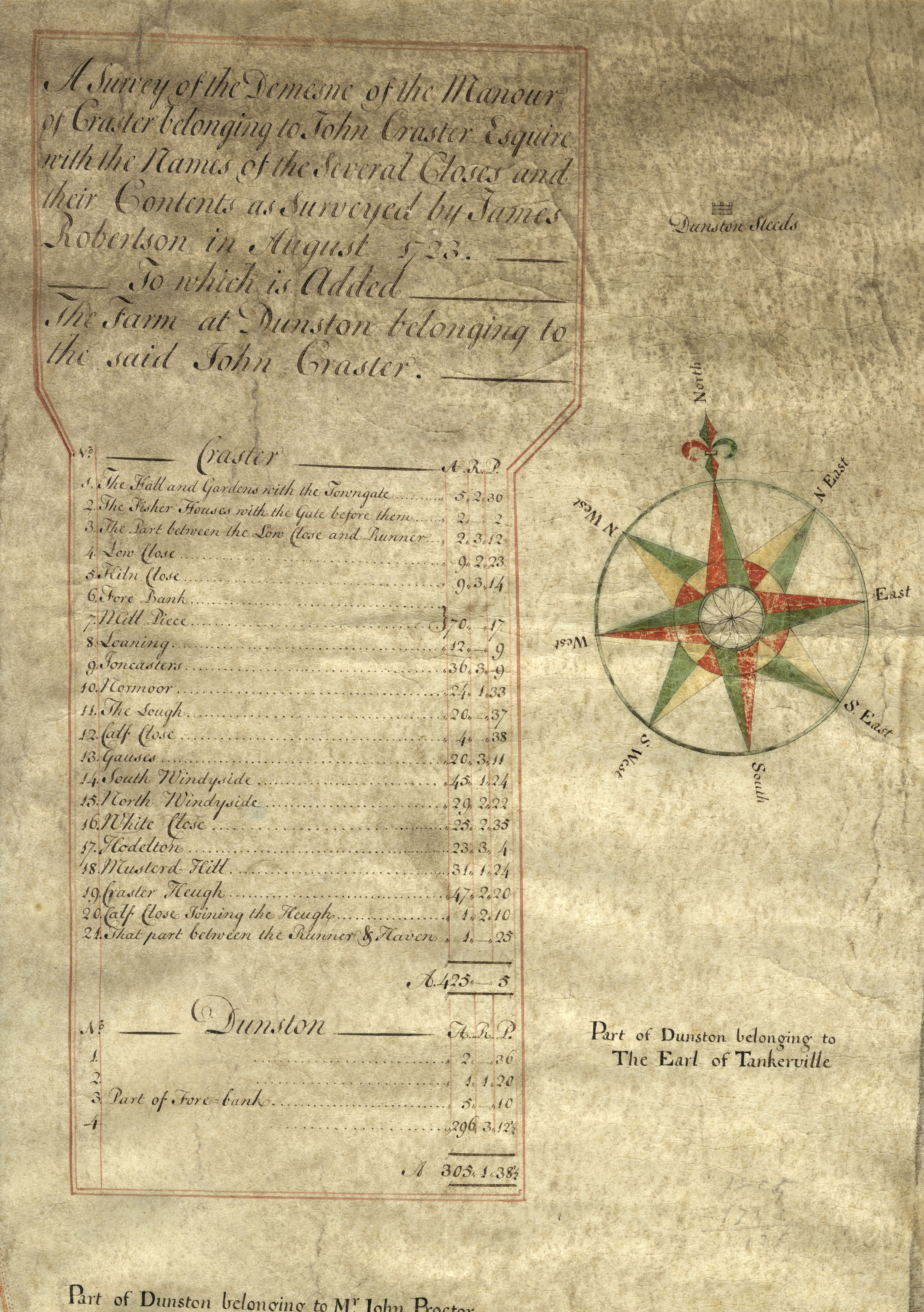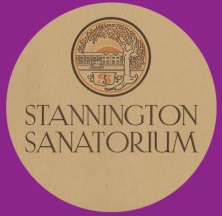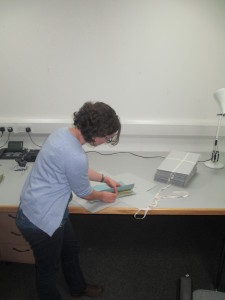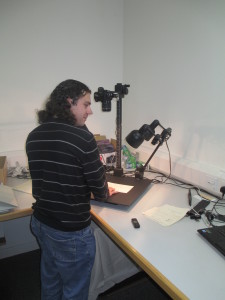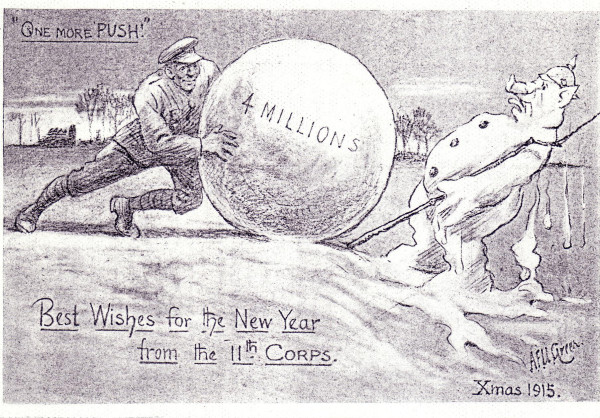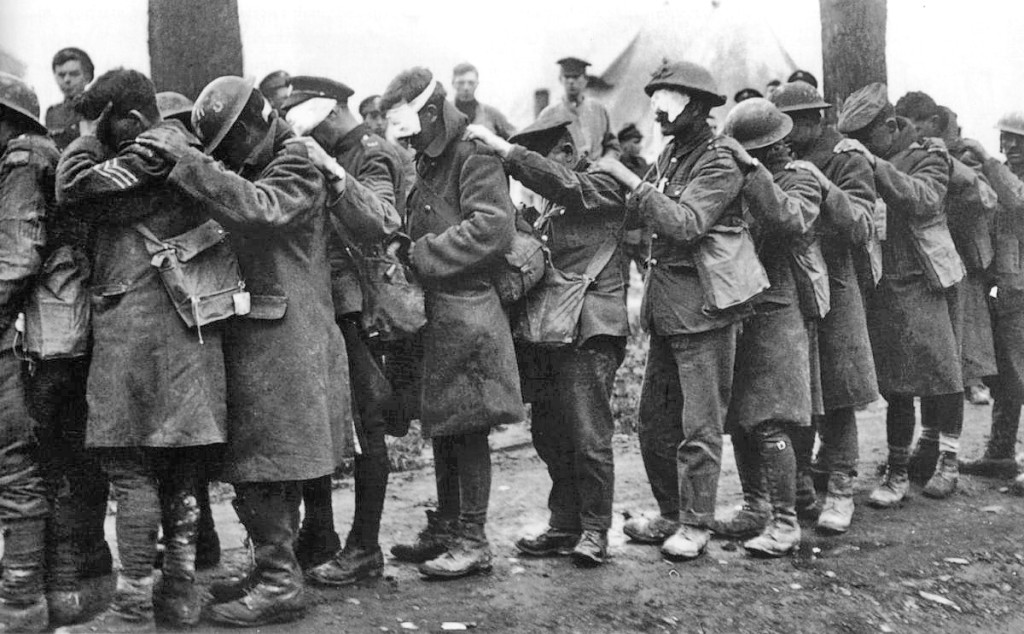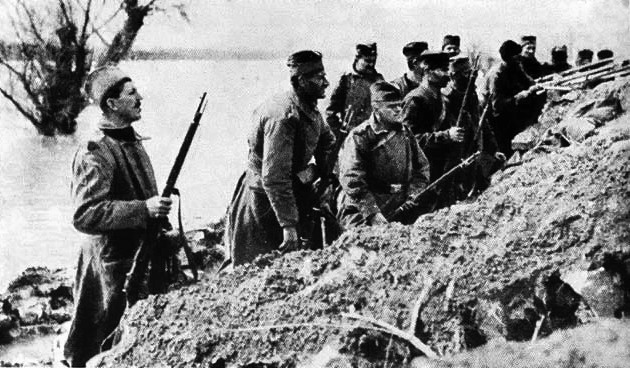In our first post we looked at some of the court rolls, and in the second how the courts worked. We will now explore some of the other documents that we commonly use to determine whether a place is a manor, and what else we can find out from them. From the documents we can learn more about agriculture and diet of the period, crime and the way criminals were treated, urban growth and industrial development, and land, house or property ownership. There is excellent scope for local history studies from these documents and the detail they give of land boundaries and the individuals who held them. There is also huge potential for genealogists – though you may think they would only provide information about the landed classes, some court rolls and other documents list the names of those renting or holding land by service. Here we have divided up the documents we use thematically.
Geographical documents
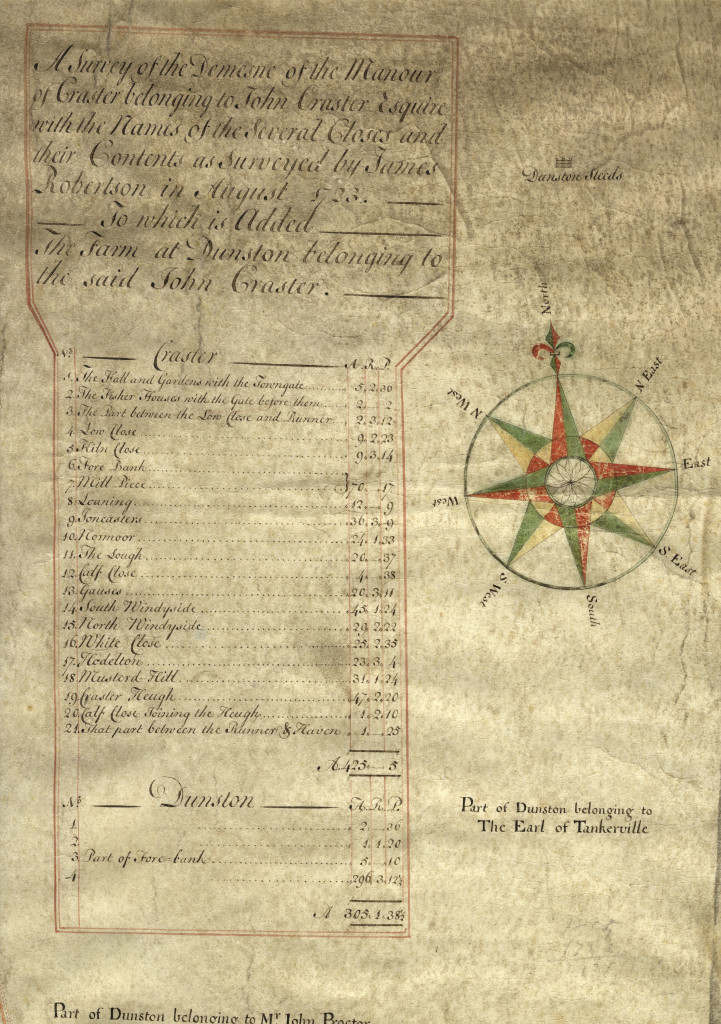 Surveys – as you would expect, these are descriptions of the manor and its boundaries. This can be very useful when trying to identify what land was owned by whom. They often also detail the customs of the manor, which often differed from place to place.
Surveys – as you would expect, these are descriptions of the manor and its boundaries. This can be very useful when trying to identify what land was owned by whom. They often also detail the customs of the manor, which often differed from place to place.
ZCR/M/2: Survey of demesne of Manor of Craster, Northumberland
Terriers – a survey arranged topographically, showing you the manor field by field or where open fields existed, strip by strip.
Maps – from the sixteenth century this survey information is commonly laid out in the form of maps. These marked out the boundaries, adjoining manors or parishes, and topographical features. Unlike the terriers these would be done to scale, and became increasingly accurate as time went on.
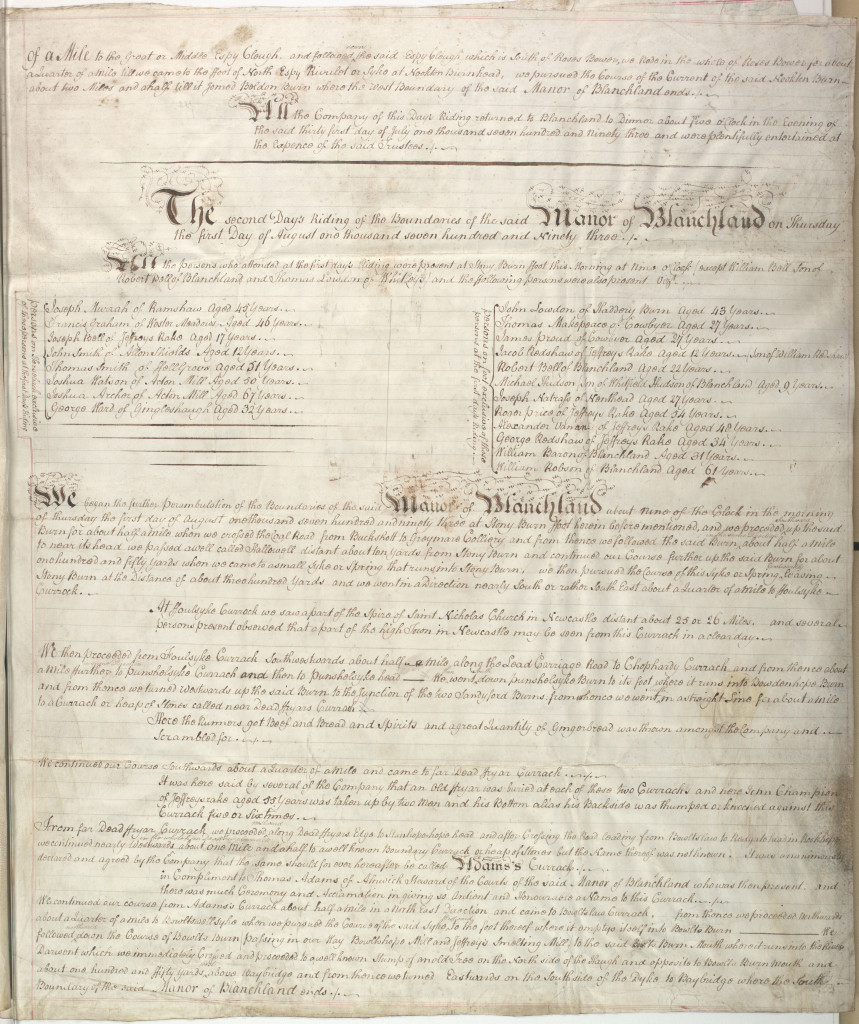 Boundary roll – Description of the manorial boundary, though not a full perambulation.
Boundary roll – Description of the manorial boundary, though not a full perambulation.
NRO 00452/E/3/3/1/2: Blanchland Bounder Roll, Northumberland.
Perambulation – A long description of walk around the boundary, detailing local landmarks.
Land holding and ownership
Rentals – the names of all the tenants of the manor, however they held it, with a description of what they held and how much they paid, and what form their payment took. Payments could be in the form of money or produce. If they were expected to provide services it would say what these were. These weren’t as frequent as accounts or court rolls and sadly don’t always survive.
Custumals – The survey of rents, services owed by the tenants to the lord of the manor, the rights of the lord, the obligations he owed, and the customs of the manor. These would need to be examined occasionally, and everyone reminded of what these were to avoid confusion. Often the customs or rents changed, for example if services or produce were exchanged for payments of money.
Extents – An often earlier form of rental, a valuation and description of everything on the manor, such as the manor house, mills, demesne land (much like a ‘home farm’, the land near the manor house farmed for the lord), tenant’s rents and services.
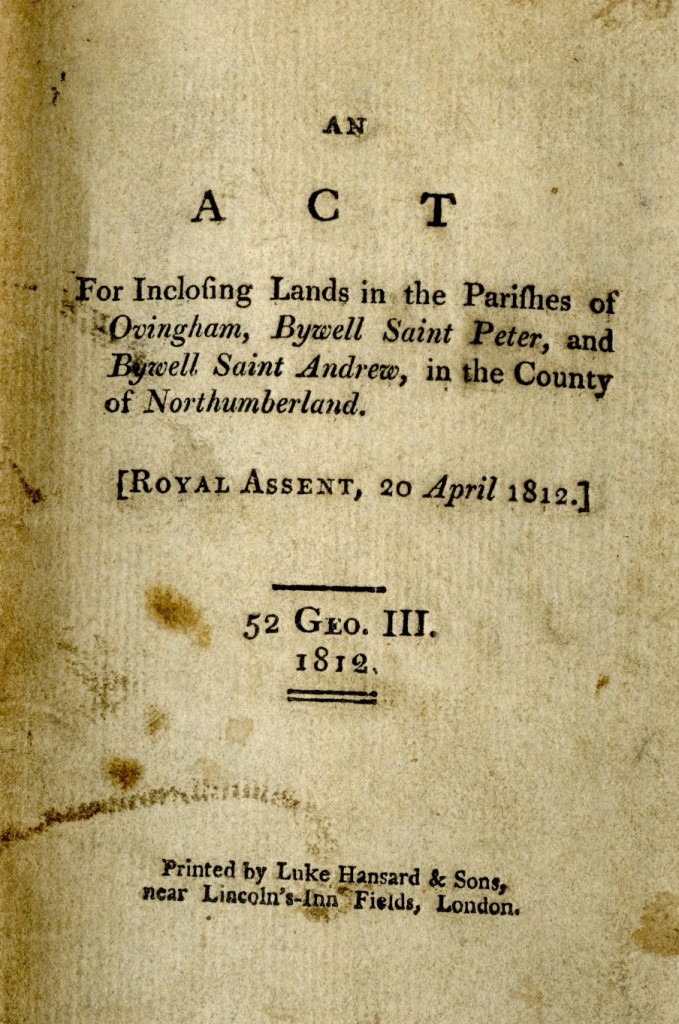 Surrenders and admissions – The transferral of copyhold land from one owner to the next was done by one owner ‘surrendering’ his or her claim to the lord, who then ‘admitted’ the next tenant. This would be written down in the court roll, and the new tenant would be given a copy of what was written, hence this being called ‘copyhold’.
Surrenders and admissions – The transferral of copyhold land from one owner to the next was done by one owner ‘surrendering’ his or her claim to the lord, who then ‘admitted’ the next tenant. This would be written down in the court roll, and the new tenant would be given a copy of what was written, hence this being called ‘copyhold’.
ZCO IX/5/1: Enclosure Act for Ovingham, Bywell St Peter and Bywell St Andrew.
Enclosure Awards – Enclosure was the practice of taking areas of unused land, strip fields or common and dividing them into privately owned fields. This would be done through private act of parliament up until about 1800, after which public acts were made possible, and from 1845 Commissioners were appointed to oversee the process of enclosure and issue enclosure awards. The awards detail how the land was divided and who the owners were.
Court papers
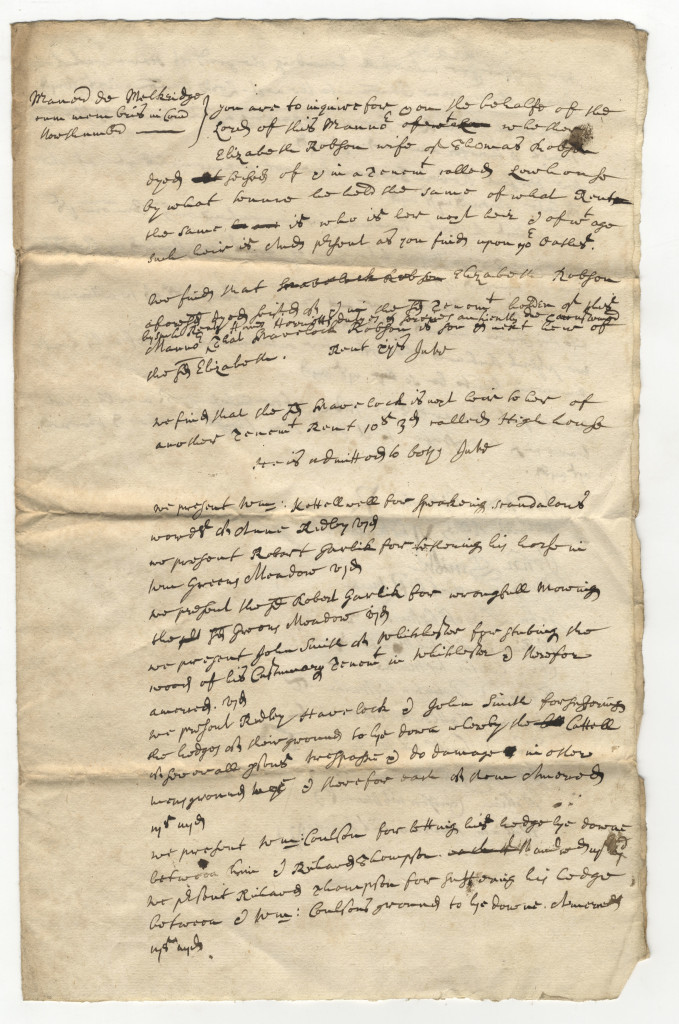 Presentments – lists of the matters to be dealt with by the court, such as disagreements between tenants or disobeying the manor customs, often drawn up beforehand by the jury. They might often be included in the court roll. ZBL 2/13/21 has some interesting examples including those brought before the court for offences such as ‘speaking scandalous words’ of someone or ‘wrongful mowing’ of someone else’s meadow.
Presentments – lists of the matters to be dealt with by the court, such as disagreements between tenants or disobeying the manor customs, often drawn up beforehand by the jury. They might often be included in the court roll. ZBL 2/13/21 has some interesting examples including those brought before the court for offences such as ‘speaking scandalous words’ of someone or ‘wrongful mowing’ of someone else’s meadow.
ZBL 2/13/21: Presentments at Melkridge
Suit rolls or Call books – like an attendance register of everyone who owed suit to the court or attended the court. In some places these could be resident books, not only of the tenants but of everyone who lived in the manor. They might be kept within the court books.
Customs of the manor – a list of the individual customs of the manor, such as how many animals an individual could feed on the common
Stewards’ papers
Accounts – These would be kept by the steward or bailiff of the manor, usually annually at Michaelmas (the 29th September), and marked the income and outgoings of the manor. For example ‘charges’ or income from the rents, money from sale of produce or fines; and ‘discharges’ or expenditure from purchasing livestock, repairs or labour.
Appointment of bailiff – a bailiff was a manager for the day-to-day running of the manor appointed by the lord. In some cases the role would be unpaid, with one of the tenants being elected annually to serve as ‘Reeve’ or ‘Greave’. This document would detail the bailiff’s appointment in the role.
Notice of court – letter to the lord notifying him of holding the court, or a notice often posted on the church door, giving the date, time and location of the court.
Correspondence – between the lord and the steward over various court matters.

